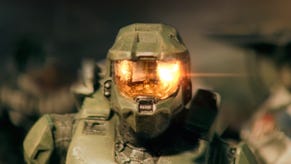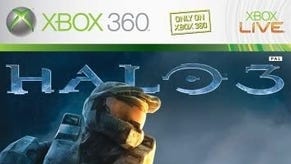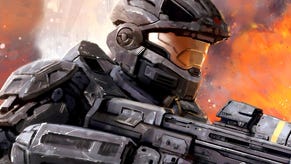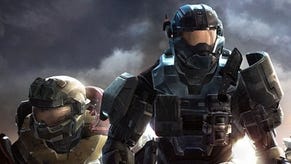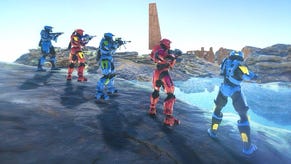Tech Analysis: Halo: Reach
Noble.
Modelling of the faces is an enormous leap over what we saw in ODST, but the real success here is in terms of the animation. For key scenes, Bungie employed the use of a technique it calls "Faceover". Here, the dialogue is recorded first, then actors are brought in to lip-sync and the animation of their features is recorded, which after artist touch-up then animates the in-game model.
Another interesting facet of the game is that the player can opt to be either a male or female Spartan, resulting in two different reads of the player dialogue. In some cases, this can produce an entirely different feel to a scene: Bungie points out one in particular during its developer commentary. Early on in the game, the player is left to take on a pack of Covenant while simultaneously dealing with an airborne Phantom. Once the threats have been disposed of, Jorge steps from the shadows to praise you and put an arm on your shoulder - an action with different connotations for a female player.
Reach is also the first time that civilians are present in a Halo game - again necessitating a strong human feel for the cut-scenes - and we also get to know the creator of the Spartan programme, Doctor Halsey, a character that particularly benefits from Bungie's Faceover techniques. However, Noble Team has to exist as a narrative device in-game as well as in the cut-scenes, plus you need to feel as though you are building a rapport with the team.

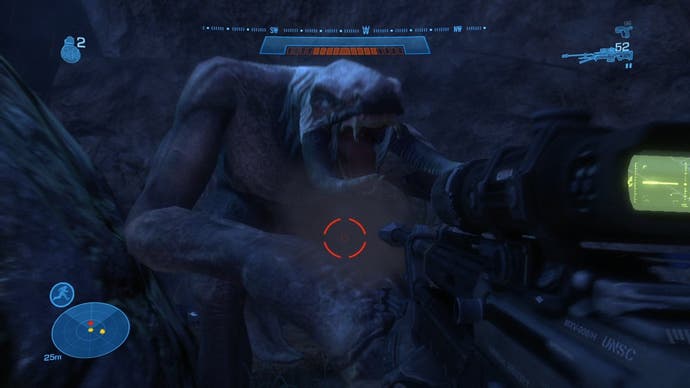
Bungie has been hugely effective in producing believable context-sensitive dialogue in previous Halo games, and it works here too. In addition to that a new "Thespian" system is included that allows for cut-scene style motions to be played out in-game - the effect is rather similar to how Half-Life 2 handles this kind of thing. It allows for smaller pieces of plot to be inserted into gameplay, and as Bungie puts it, "brings some of that 1000-page script into the game".
Finally, it would be remiss to omit mention of the orbital space combat section added to Reach - there has not been anything like it in any of the previous Halo titles. There's not a great deal that's especially technically prolific about it - it doesn't really need to be - and it certainly doesn't trouble the engine's performance level in any noticeable manner, but it does serve to give you a better sense of scale on some of the Covenant hardware and there's no doubt that coming in the midpoint of the single-player campaign, it's an especially welcome break from the first-person shooter gameplay.
Subsequent to the orbital dogfighting, the low-gravity FPS section on the Covenant cruiser is worthy of a mention though, and segues quite neatly into an appreciation of the audio improvements Bungie has made. In this section of the game, there's very little air, so the sound is correspondingly muffled. The developer is able to apply digital signal processing to every element of audio in the game (aside from the soundtrack), and while it is most dramatically used in this section, the processing is deployed throughout the game - rain rebounds off the roofs of the structures in the first level for example.


From a technical perspective, Halo: Reach is undoubtedly a colossal improvement over the previous games in the series: higher resolution without sacrificing HDR, tangibly improved poly counts, insane use of particles and alpha, far higher levels of dynamic lighting, four times the draw distance, four times the amount of enemy units... the list is seemingly never-ending. But for all its technical achievements, it's clearly still a Halo game. It looks like one, it plays like one - and that's all by design.
What it does mean for some though is that there is a layer of "familiarity breeds contempt" style cynicism to break down before you appreciate Reach for what it is: the best Halo yet, and probably the very best shooter available on 360. The first level does a pretty good job of setting out the stall in terms of the many technical improvements, but the bottom line is that they do not come at the cost of any of the established Bungie standards: multiplayer is still brilliant, split-screen hasn't been jettisoned, and the entire campaign is still co-op friendly both online and off.
Evolutionary in many respects, sure, but where it counts Halo: Reach is the revolution we've been waiting for: a genuinely superb game with a combined feature set that pushes Xbox 360 performance to the bleeding edge.
Check out our Halo: Reach review for in-depth gameplay analysis.


